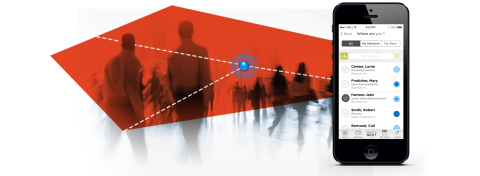Beacons Guide the Way for Event Organizers and Attendees

“This industry (trade shows and expos) has not changed for 150 years. People just used to dress better,” said David Ely, head of sales and marketing for TurnoutNow.
But Ely feels change now is possible and affordable with the arrival of beacons on the scene. There is no need to guess what attendees are doing at your event. Through the use of Bluetooth beacons, real-time data now is available to trade show and expo organizers.
Bluetooth beacons are transmitters that use Bluetooth Low Energy 4.0 to broadcast signals that can be heard by compatible or smart devices.
A typical example would be a signal transmitted from a beacon to a smartphone. When the smartphone is in a beacon’s proximity (from inches to 100 or so feet), the beacon will automatically recognize it and will be able to interact with that device.
ASAE used TurnoutNow’s cloud-based, data analytics technology at their Tech Conference last December. Allison Wachter, director of registration and exhibits for ASAE, said that the beacons gave her information that will help ASAE better plan future meetings. Information that was never available before.
Wachter said that it was not unusual for exhibitors to ask her about traffic on the showfloor. Before they started using the beacons, it was not possible to accurately measure the traffic. “Now, we have hard data and can see counts of people coming in and out of the show floor,” Wachter said. “We have heat maps to see where the dead spots were.”
Because that information is available real-time, shewas able to address dead spots by moving coffee and desert stations to those areas to increase traffic.
ASAE plans to use the beacon technology for all their major events in 2015. While the tech event collected anonymous data, they plan to start having attendees login to the app. That will allow them to use the technology for CEU credit tracking and post show reporting on sessions attended and booths visited.
“As a planner I think it’s a game changer. It helps us do our job better and know what’s really going on at our event that we didn’t know before,” Wachter said.
While data can certainly help the event organizer, Iris Goldman, founder of On Location Engagements (OLE) feels the key to successfully deploying beacons at a trade show is delivering great content to the target audience. Goldman thinks the ultimate experience for an attendee at a show would be using beacons to create an experience for each and every attendee based on their unique needs and interests.
Retailers often use beacons to deliver coupons and deals to customers walking through their store. But that is not how Goldman thinks exhibitors at a trade show should be using beacons.
Goldman said, “It’s all about curation, no matter how you slice it and dice it if you don’t have much to say, it becomes a proximity marketing Bluetooth device, that’s all. Don’t make it a proximity marketing device because people will just turn it off immediately. “
The Boston Convention & Exhibition Center is using beacons as geolocation devices that help attendees navigate throughout the convention center.
Jacques Racine, founder and chief innovation officer of Sherpa Solutions and provider of the Boston Convention & Exhibition Center technology, said the mapping is just one of the advantages to geolocation.
Show organizers, exhibitors and attendees can tap into the system at the Boston Convention & Exhibition Center and use it as a networking tool via Sherpa’s ActivLocator.
Racine said that with the Sherpa geolocation services, attendees can use the app to connect with people they want to meet and then actually locate them in the building.
Racine feels that attendees are not going to be thinking about a message they received through Bluetooth Beacons when they entered the exhibit hall and that messages from exhibitors targeted to attendees are not going to make or break a meeting.
“But if everyone can meet 15 or so more people in the course of a meeting, then there is a huge, huge value the system will bring to the attendees and therefore to the organizers,” he added.
While there are many different ways to use beacons, the key will be in providing an experience attendees value enough to prompt them to enable Bluetooth on their devices.


Add new comment